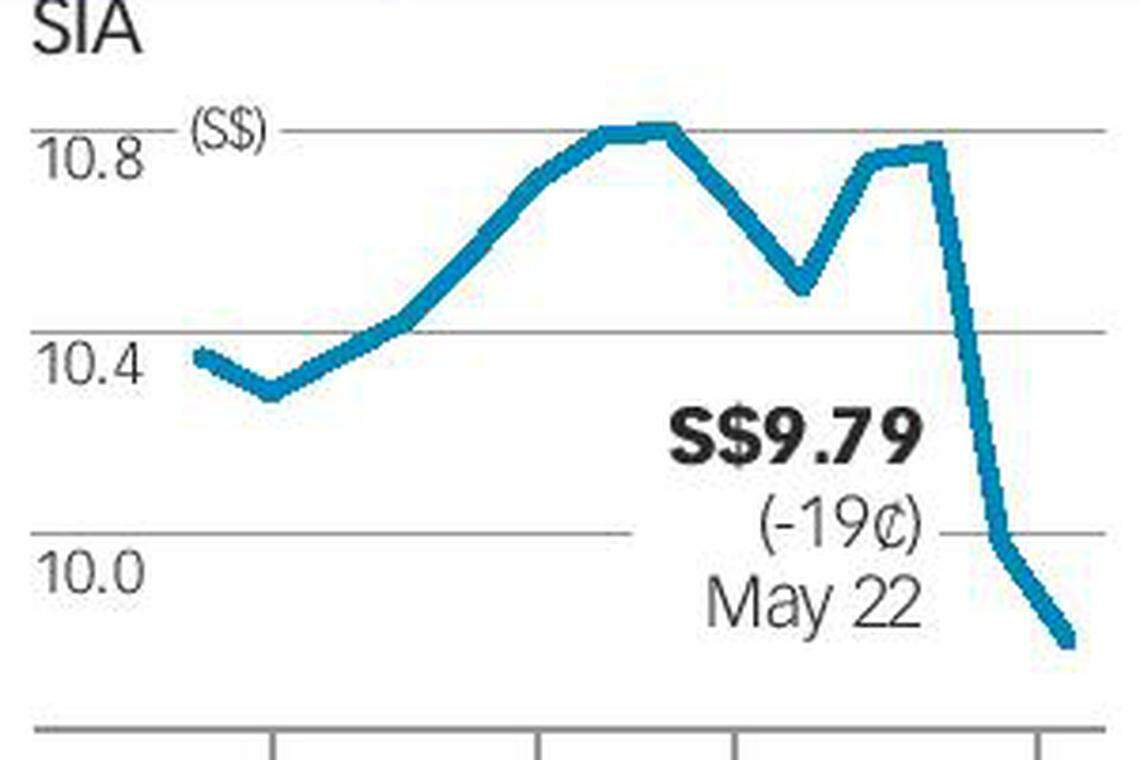Cathay Pacific to axe 600 jobs amid yield, cost pressures on airlines
It has been hit by fuel-hedging losses, a fall in business travel and competition from expanding Chinese carriers. Other airlines also face headwinds

Singapore
CATHAY Pacific confirmed on Monday that it would lay off some 600 staff in its biggest cost-cutting exercise in two decades, as it looks for ways to stem losses and claw its way back to profitability.
It is not the only one facing turbulence; despite historically low oil prices, a number of airlines are facing strong headwinds, ranging from deteriorating yields to government policies.
At Cathay Pacific's headquarters in Hong Kong, around 190 management and 400 non-managerial staff will be made redundant; the numbers represent 25 per cent and 18 per cent of management and non-managerial positions respectively, the airline said in a statement.
No frontline employees, pilots or cabin crew will be hit, but the group will push for productivity improvements; meanwhile, it will also restructure its cargo unit.
The airline's chief executive Rupert Hogg, who assumed the role on May 1, said: "We've had to make tough but necessary decisions for the future of our business and our customers. As we look to the future, we will have a new structure that will make us leaner, faster and more responsive to our customers' needs."

Shares in Cathay Pacific rose HK$0.26 (S$0.04) in response, and closed at HK$11.58 on Monday.
South China Morning Post reported that the carrier is in the early phase of a three-year transformation programme and is seeking to save HK$4 billion in that time frame.
This comes after the carrier posted its first annual loss in eight years in March, sinking into the red with losses of HK$575 million for 2016; in the year-ago period, it made profits of HK$6 billion.
Its bottom line was hit by fuel hedging losses, a decline in business travel and an eroding market share arising from the rapidly expanding Chinese carriers.
Endau Analytics' aviation analyst Shukor Yusof expects more job cuts are in the offing: "I don't think 600 out of over 30,000 would help them very much. But they've taken the right step. Labour costs are among the highest at Cathay Pacific compared to many carriers around the world, not just the region."
Amid over-capacity, the Hong Kong carrier is likely to end up cutting capacity and downsizing its network, he said; this means cabin crew and pilots could also be affected down the line.
Working more closely with shareholder Air China is another avenue Cathay Pacific should consider in its restructuring, he suggested.
Singapore Airlines (SIA) has also embarked on a wide-ranging review of its business to reposition itself for long-term growth, as competition remains stiff in both the premium and budget segments.
Last week, the Singapore carrier revealed a surprise S$138.3 million fourth-quarter loss, which sent its share price reeling.
It announced that it would re-integrate SIA Cargo back into the group. The majority of SIA Cargo's nearly 900 employees will be retained in the new cargo division; some will be transferred to other divisions or elsewhere in the SIA group.
DBS Group research analyst Paul Yong, who has a target price of S$10.10 per SIA share, said: "While (the business review) may pay off in the longer term, we remain cautious on the near-term earnings outlook for SIA, as its flagship passenger business continues to face stiff competition and soft yields, leading to lower profitability."

Shares in SIA continued to fall on Monday, sliding 19 cents to close at S$9.79; it had shed 78 cents last Friday.
Mr Shukor said the yield decline will probably "get worse before it stabilises", and that demand for the airline's premium seats has fallen since the financial crisis in 2008/2009.
Even with burgeoning travel demand, premium carriers in the region such as Cathay Pacific and SIA are grappling with deteriorating yields, cost pressures and tough competition from Chinese and Gulf carriers.
Buoyed by cheaper fuel prices and new, fuel-efficient aircraft, long-haul, low-cost carriers could also add to the headaches faced by full-service carriers. Norwegian, for instance, is set to start direct flights out of Changi Airport to London from September, a route now operated by SIA and British Airways.
Meanwhile, SIA's budget arm Scoot will commence long-haul flights to Athens from June; it is set to add another route, possibly to Honolulu, by year's end. Over in Malaysia, AirAsia X will start flying to Honolulu mid-year and is eyeing more routes in the West.
Dubai's Emirates hasn't been spared either. Earlier this month, it reported an 82 per cent nose-dive in full-year profits, partly due to recently implemented travel policies banning carry-on laptops on flights between the Middle East and the US. As a result, Emirates has had to reduce flight frequencies on five of its US routes, citing waning demand.
Qantas, on the other hand, is reportedly projecting its second best annual profit this year, having kick-started its own transformation programme back in 2014.
One bright spot for now is that jet fuel prices are still relatively low, although they are widely expected to rise again.
The International Air Transport Association (Iata) has projected that the world's airlines will rack up US$29.8 billion in collective profits this year. However, 60 per cent of the industry profits will be driven by North American carriers, thanks to recent consolidation.
Asia-Pacific carriers, once the industry's star performers, are expected to contribute to just 20 per cent of industry profits this year.
KEYWORDS IN THIS ARTICLE
BT is now on Telegram!
For daily updates on weekdays and specially selected content for the weekend. Subscribe to t.me/BizTimes
Companies & Markets
Honda to spend US$11 billion on EV strategy in Canada
GlaxoSmithKline sues Pfizer and BioNTech over Covid-19 vaccine technology
Mapletree Industrial Trust Q4 DPU rises 0.9% to S$0.0336
Nasdaq’s profit falls as shaky economy keeps IPO revival elusive
iFast Q1 net profit surges on ePension unit performance
Suntec Reit Q1 DPU down 13% to S$0.01511 in absence of capital distribution
